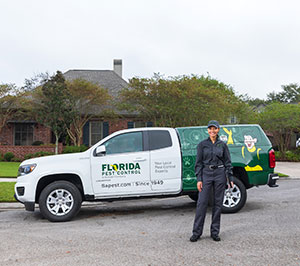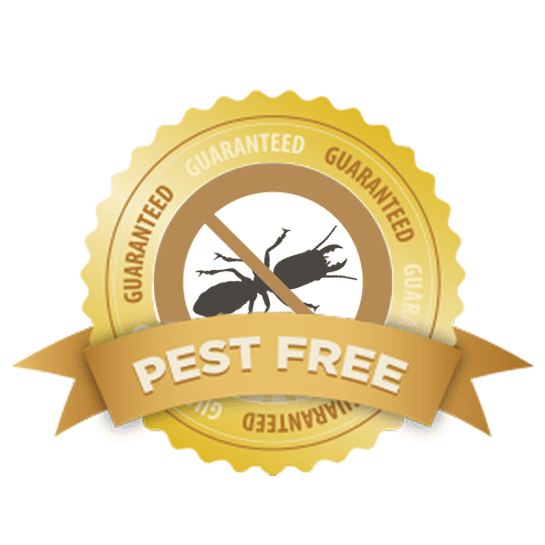A1 Charlotte Pest Control Companies - Your Neighborhood Pest Professionals
A1 Charlotte Pest Control Companies - Your Neighborhood Pest Professionals
Blog Article
Bed Insect Therapy Breakdown: Comparing Chemical Vs. Non-Chemical Solutions
In the realm of parasite control, specifically when taking care of the consistent concern of bed bugs, the selection between chemical and non-chemical therapy options can be a crucial one. Both techniques supply distinct benefits and drawbacks, affecting aspects such as effectiveness, safety and security factors to consider, and general cost. By analyzing the nuanced information of each technique, a clearer understanding of which course to pursue in addressing a bed pest problem can be obtained.
Performance of Chemical Treatments
Chemical therapies for bed pest problems have actually been widely acknowledged for their rapid and potent efficacy in getting rid of these bugs. When considering the effectiveness of chemical therapies, it is important to understand that they can give a thorough and quick remedy to a bed insect problem. Professional exterminators frequently rely upon insecticides to target bed insects at numerous stages of their life cycle, including nymphs, eggs, and adults. These chemicals normally work by interrupting the bed bugs' nerve system, leading to paralysis and eventual death.
In addition, chemical treatments have the benefit of using recurring impacts, meaning that they can remain to get rid of bed bugs also after the initial application. This recurring action is particularly advantageous in combating any type of potential re-infestations. In addition, the rapid action of chemical treatments can bring alleviation to individuals encountering serious bed bug infestations, permitting them to gain back control of their space rapidly.
Safety Interest In Chemical Solutions
One important facet that needs careful consideration when utilizing chemical options for bed pest treatment is making sure the security of owners and the environment. While chemical treatments can be efficient in getting rid of bed pests, they might present dangers if not managed properly. One of the key safety and security interest in chemical remedies is the prospective injury they can create to human health and wellness. Direct exposure to certain chemicals utilized in bed bug treatments can bring about respiratory problems, skin irritability, or various other negative responses, especially in individuals with pre-existing problems or level of sensitivities. Furthermore, inappropriate application or dose of chemical pesticides can result in harmful deposits sticking around in the cured location, positioning long-lasting wellness threats to occupants.
Furthermore, the environmental effect of chemical options is another significant factor to consider. Some pesticides used in bed pest therapies might be harmful to valuable bugs, wild animals, and communities if they seep right into the soil or water supply. It is important to use chemical treatments carefully, adhering to safety and security guidelines, and thinking about much less hazardous alternatives to reduce these risks and guarantee the effective and secure management of bed pest infestations.
Benefits of Non-Chemical Methods
Considering the prospective safety worries and ecological impact connected with chemical solutions for bed bug therapy, exploring non-chemical approaches offers a promising choice with numerous unique benefits. Non-chemical treatments are eco friendly, as they do not contribute to air or water air pollution, making them a lasting option for parasite control.
Additionally, non-chemical remedies can be efficient in targeting bed pests, including hard-to-reach areas where chemical therapies may not permeate. Approaches such as warm treatment, vacuuming, heavy steam cleaning, and bed mattress encasements supply comprehensive obliteration without making use of damaging chemicals. In addition, non-chemical strategies can be less disruptive, calling for marginal preparation and permitting quicker reentry right into dealt with areas. Overall, going with non-chemical bed insect treatment techniques not just focuses on security and environmental management however additionally makes sure reliable and extensive pest control.
Limitations of Non-Chemical Treatments

Additionally, non-chemical therapies typically call for multiple applications to attain successful eradication. This can be taxing and may not always assure full elimination of all bed pests and their eggs, specifically in hard-to-reach or surprise places.
In addition, the success of non-chemical treatments heavily counts on proper application and thoroughness, which can be challenging for people without expert competence. Insufficient application of non-chemical techniques might result in insufficient removal, bring about persistent invasions and the demand for added therapies.
Consequently, while non-chemical treatments have their advantages, it is vital to recognize these constraints and consider them when identifying one of the most efficient approach for handling bed pest problems.
Expense Contrast: Chemical Vs. Non-Chemical Options
Offered the restrictions linked with non-chemical therapies, a necessary element to examine in the context of bed pest monitoring is the expense comparison in between chemical and non-chemical options. Chemical therapies usually include the application of insecticides detailed pest control by professionals, which can vary from $250 to $900 per area, depending upon the extent of the invasion and the size of the location to be treated. On the other hand, non-chemical therapies like warm therapy or heavy steam can be much more expensive, with costs ranging from $1,000 to $6,000 for a whole home. While the initial expense of chemical treatments might appear reduced, numerous therapies may be required to completely get rid of the infestation, possibly raising the total price. On the various other hand, non-chemical options may supply an extra green and sustainable option, although they can be cost-prohibitive for some individuals. Ultimately, when considering the price of bed pest treatment options, it is essential to evaluate the in advance expenditures against the performance and lasting sustainability of the chosen method.
Final Thought

Considering the prospective security concerns and environmental influence associated with chemical services for bed insect therapy, discovering non-chemical strategies offers an encouraging choice with several distinct benefits.Provided the constraints linked with non-chemical treatments, a crucial facet to examine in the official website context of bed pest monitoring is the expense contrast between chemical and non-chemical choices. In contrast, non-chemical therapies like warmth therapy or heavy steam can be much more pricey, with expenses varying from $1,000 to $6,000 for a whole home. While the initial price of chemical treatments might seem reduced, multiple therapies may be required to totally remove the infestation, possibly boosting the overall cost.In conclusion, when comparing chemical and non-chemical bed bug treatment alternatives, it is important find out here to think about efficiency, safety, advantages, limitations, and expense.
Report this page